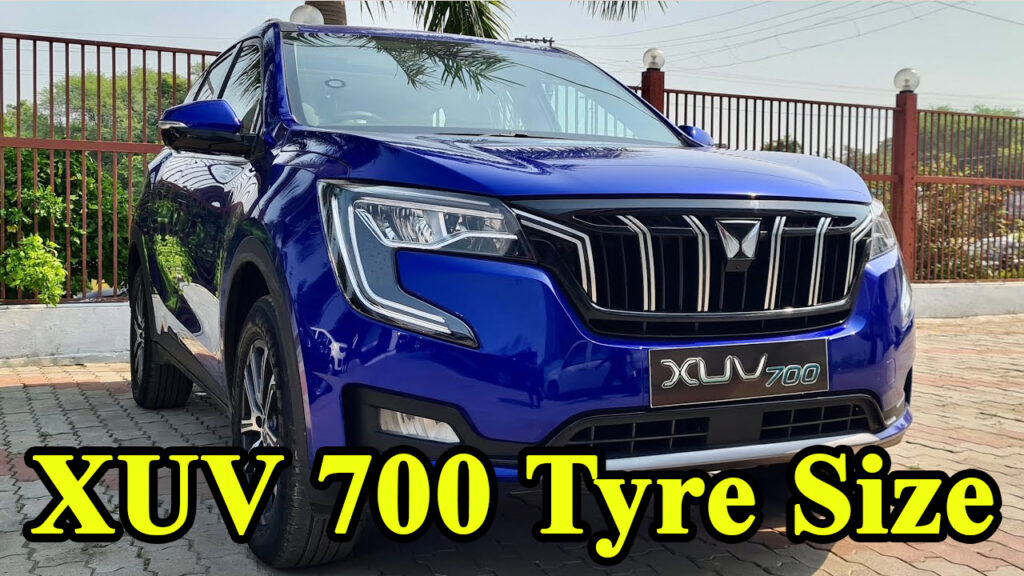When you look at a tire, you’ll see a series of numbers and letters, like “205/60R16.” This isn’t just a random code; it’s a standardized language that tells you everything you need to know about that tire. Let’s break it down using a common Kia Soul tire size, say 205/60R16:
- 205: This is the tire width in millimeters. It measures the tire from sidewall to sidewall. A wider tire generally means more contact with the road, which can translate to better grip and handling.
- 60: This is the aspect ratio or profile. It’s the height of the sidewall as a percentage of the tire’s width. In this case, the sidewall height is 60% of 205mm. A lower aspect ratio (e.g., 45) means a shorter sidewall, often found on performance-oriented tires, while a higher aspect ratio (e.g., 70) indicates a taller sidewall, common on comfort-focused or off-road tires.
- R: This signifies the tire construction type, which in almost all modern passenger vehicles, means “Radial.” Radial tires have plies that run perpendicular to the direction of travel, offering durability and a smooth ride.
- 16: This is the wheel diameter in inches. It tells you the size of the wheel (rim) that the tire is designed to fit.
Understanding these numbers is the first step to becoming an informed Kia Soul owner when it comes to tires.
The Ultimate Guide to 285/45R22 All-Terrain Tires: Go Anywhere, Do Anything
Kia Soul Factory Tire Sizes by Model Year and Trim
Kia, like other manufacturers, equips different trims of the Soul with varying wheel and tire combinations to suit their intended purpose and aesthetic. Here’s a general overview of common factory tire sizes you’ll find on Kia Soul models:
Specific examples for recent models (e.g., 2023-2024 Kia Soul):
- Kia Soul LX, S, EX: Often come with 205/60R16 tires.
- Kia Soul EX Designer Collection, GT-Line, Turbo: May feature larger wheels and tires, such as 235/45R18.
Pro Tip: The most accurate way to find your Kia Soul’s original equipment (OEM) tire size is to check the tire placard located on the driver’s side door jamb (or sometimes inside the glove box or fuel filler door). This label also provides the recommended tire pressure for your specific vehicle. For example, a 2023 Kia Soul LX might recommend 33 psi for both front and rear tires, while a GT-Line might suggest 35 psi. Always follow these recommendations!
The Impact of Tire Size: Why It Matters More Than You Think
Choosing the correct tire size isn’t just about fitting it onto the wheel; it profoundly affects your Kia Soul’s performance, safety, and even your wallet.
Performance and Handling
- Grip and Cornering: Generally, wider tires (larger first number) offer a larger contact patch with the road, leading to better grip and improved cornering stability. This is why performance trims often have wider tires. I remember upgrading the tires on my old compact car years ago to a slightly wider option, and the difference in how it hugged the curves on my favorite back roads was noticeable. It felt more planted, more confident.
- Steering Responsiveness: Tires with a lower aspect ratio (smaller middle number, e.g., 235/45R18 vs. 205/60R16) have shorter, stiffer sidewalls. This translates to quicker steering response and a more “sporty” feel, as there’s less flex in the sidewall. However, this often comes at the cost of ride comfort.
- Braking Distance: Optimal tire size and tread design contribute to shorter braking distances, especially in emergency situations. The right tire can be the difference between a near-miss and a collision.
Ride Comfort and Noise
- Sidewall Height: As mentioned, a taller sidewall (higher aspect ratio) provides more cushioning, absorbing road imperfections better. This typically results in a smoother, more comfortable ride. Think of it like a pillow – a thicker one offers more give.
- Road Noise: Tire tread patterns and rubber compounds play a significant role in road noise. Some tires are designed specifically for a quieter ride, which can be a huge benefit on longer trips. I once had a set of tires on my family sedan that hummed like a beehive on the highway – never again! Researching owner reviews for noise levels is something I always do now.
Fuel Efficiency
- Rolling Resistance: Tires are a significant factor in a vehicle’s fuel economy. Tires with lower rolling resistance require less energy to keep them moving, leading to better gas mileage. Often, narrower tires with specific tread designs are optimized for this. While the Soul isn’t a massive SUV, every bit of fuel efficiency helps, especially with today’s gas prices.
Speedometer Accuracy
- Overall Diameter: This is a crucial one. Your vehicle’s speedometer is calibrated to the original equipment tire’s overall diameter. If you significantly change the tire’s overall diameter (by choosing a tire that’s too tall or too short), your speedometer will read incorrectly. This means you might be going faster or slower than what your speedometer indicates, which can lead to speeding tickets or misjudging distances. Most experts recommend staying within a 3% variance of the OEM tire’s overall diameter when considering aftermarket sizes.
Safety and Wear
- Clearance Issues: Installing tires that are too large in overall diameter or too wide can lead to rubbing against the fender wells or suspension components, especially when turning or hitting bumps. This is a major safety concern and can damage your tires and vehicle.
- Uneven Wear and Suspension Strain: Incorrect tire sizes can throw off your vehicle’s suspension geometry, leading to premature and uneven tire wear. This not only shortens the lifespan of your tires but can also put undue stress on suspension components, leading to costly repairs down the line.
Popular Tire Brands and Options for Your Kia Soul
When it comes to choosing tires for your Kia Soul, you have a wealth of reputable brands and types to consider.
-
All-Season Tires: These are the most common choice for Kia Soul owners, offering a balance of performance in dry, wet, and light snow conditions. They are a good “set it and forget it” option for many drivers. Popular choices include:
- Kumho Solus TA31/TA51a: Often come as OEM tires on the Soul, known for a comfortable ride and good all-season traction. I personally had Kumho Solus TA31s on a previous car and found them to be reliable for everyday driving in suburban New Jersey.
- Continental PureContact LS / ExtremeContact DWS06 Plus: Highly rated for ride comfort, quietness, and excellent wet/dry grip. The DWS06 Plus is particularly lauded for its performance in various conditions.
- Goodyear Assurance series (e.g., WeatherReady, ComfortDrive): Known for good all-season performance and durability.
- BFGoodrich Advantage Control: Another solid all-season performer offering a good balance of grip and comfort.
- Michelin CrossClimate2: A premium all-season tire that often surprises with its strong performance in light snow, bridging the gap between all-season and dedicated winter tires.
-
Winter Tires: If you live in an area with significant snow and ice (like my cousins in upstate New York, who swap theirs out every fall), dedicated winter tires are a wise investment. They have specialized rubber compounds that remain flexible in cold temperatures and aggressive tread patterns designed for maximum grip on slippery surfaces.
- Pirelli Winter Sottozero 3: A popular choice for strong winter performance.
Tire Replacement Costs: What to Expect
The cost of replacing tires for your Kia Soul can vary significantly based on several factors:
- Tire Size: Larger tires with lower profiles (like the 235/45R18) generally cost more than smaller, higher-profile tires (like the 205/60R16).
- Brand: Premium brands like Michelin and Continental typically come with a higher price tag than budget-friendly options.
- Tire Type: Performance tires or specialized winter tires will be more expensive than standard all-season tires.
- Where you buy them: Prices can vary between online retailers, local tire shops, and dealerships.
General Price Range (per tire, installed):
- Budget-friendly all-season (e.g., specific Kumho, Accelera, Dextero): $70 – $120
- Mid-range all-season (e.g., Goodyear Assurance, General AltiMAX): $120 – $180
- Premium all-season/performance (e.g., Continental PureContact, Michelin CrossClimate2): $180 – $250+
So, a full set of four tires for your Kia Soul could range anywhere from $280 to over $1000, not including mounting, balancing, and disposal fees (which typically add $15-$30 per tire).
My Personal Experience: A few years ago, I had to replace the tires on my wife’s Kia Soul. She has the 17-inch wheels. I shopped around online and checked prices at a few local shops near our home in central Florida. While the initial online prices looked appealing, once you factored in shipping and installation, a reputable local tire shop offered a competitive all-in price for a set of quality mid-range all-season tires. Plus, I liked the idea of supporting a local business and having someone I could easily go back to if there were any issues. For me, the total came out to just under $600 for four installed tires, and they even included free rotations for the life of the tires – a nice bonus!
Essential Tire Maintenance for Your Kia Soul
Proper tire maintenance is paramount for safety, longevity, and optimal performance.
- Regular Tire Pressure Checks: This is perhaps the most important and easiest maintenance task. Check your tire pressure at least once a month, and especially before long trips or significant temperature changes. Underinflated tires reduce fuel efficiency, cause uneven wear, and can be dangerous. Overinflated tires can lead to a harsher ride and reduced grip. The correct PSI (pounds per square inch) is on your door jamb sticker.
- Tire Rotations: Rotate your tires every 5,000 to 7,500 miles, or as recommended by your Kia owner’s manual. This ensures even wear across all four tires, extending their lifespan and maintaining balanced handling.
- Wheel Alignment: If you notice your Kia Soul pulling to one side, uneven tire wear, or a crooked steering wheel, it might be time for a wheel alignment. Potholes and minor impacts can throw off your alignment, affecting tire wear and handling.
- Tread Depth Checks: Use the “penny test” or a tread depth gauge to monitor your tire’s tread. Insert a penny into a tread groove with Lincoln’s head facing down. If you can see the top of his head, your tread is shallow, and it’s time for new tires. Legal minimum tread depth in most places is 2/32 of an inch.
- Visual Inspection: Regularly inspect your tires for any signs of damage like cuts, bulges, cracks, or embedded objects. A small nail can lead to a big problem if left unnoticed.
Kia Soul’s Tires
While tire sizes might seem generic, the way you choose and maintain them adds to the “soul” of your Kia Soul. The car itself is unique, a departure from the mundane. Why should its tires be any different?
- Personalization: If you have a GT-Line or Turbo trim with the larger wheels, you might lean towards performance-oriented all-season tires that complement the car’s sportier feel. If your Soul is primarily a city commuter, perhaps a tire focused on comfort and fuel efficiency is more your style.
- Adapting to Your Environment: Living in a snowy region versus a sunny, dry climate dictates different tire choices. This isn’t just about safety; it’s about optimizing your driving experience for your specific conditions. My friend in Colorado drives a Soul and wouldn’t dream of going through winter without proper snow tires – it’s a necessary investment for safety and peace of mind there.
Conclusion: Driving with Confidence, One Tire at a Time
The Kia Soul is a fantastic little crossover, offering a blend of practicality, style, and a fun driving experience. And just like any great relationship, the connection between your Soul and the road depends heavily on the right tires. Understanding Kia Soul tire sizes, their impact, and how to maintain them empowers you as a driver.
By making informed choices about your tires – whether it’s sticking to the OEM size, considering a carefully researched upgrade, or prioritizing specific features like comfort or all-weather performance – you’re not just buying rubber; you’re investing in your safety, your vehicle’s longevity, and the overall enjoyment of every journey. So, the next time you look at your Kia Soul, remember that its tires are its unsung heroes, silently working to keep you rolling smoothly and safely down the road.
Frequently Asked Questions (FAQ)
Q1: Can I put different sized tires on my Kia Soul? A1: While it’s generally best to stick to the manufacturer’s recommended tire size (OEM), some minor deviations are possible for specific reasons (e.g., slightly wider for aesthetics or handling, or a slightly different aspect ratio for comfort). However, it’s crucial to ensure the overall tire diameter remains within a 3% variance of the original to avoid speedometer inaccuracies and potential rubbing issues. Always consult with a tire expert before making any changes.
Q2: How do I find the correct tire pressure for my Kia Soul? A2: The recommended tire pressure for your Kia Soul is listed on a sticker located on the driver’s side door jamb. It will specify the PSI (pounds per square inch) for both front and rear tires, which can sometimes differ by trim level.
Q3: How often should I replace my Kia Soul tires? A3: The lifespan of your tires depends on driving habits, road conditions, tire quality, and proper maintenance. On average, tires last between 50,000 and 70,000 miles. However, you should replace them when the tread depth reaches 2/32 of an inch (using the penny test) or if you notice significant cracks, bulges, or other damage.
Q4: Are all-season tires good enough for my Kia Soul in winter? A4: All-season tires offer decent traction in light snow and wet conditions. However, if you live in an area with harsh winters, heavy snowfall, or icy roads, dedicated winter tires are highly recommended. Their specialized rubber compounds and aggressive tread patterns provide superior grip and safety in freezing temperatures.
Q5: What are some signs that my Kia Soul needs new tires? A5: Key indicators include: * Shallow tread depth: If you can see the top of Lincoln’s head using the penny test. * Cracks or bulges: Visible damage to the sidewall or tread. * Vibration: Unusual vibrations while driving, especially at higher speeds. * Reduced grip: Feeling less secure on wet or slippery roads. * Tire age: Even with good tread, tires older than 6-10 years should be inspected by a professional as rubber degrades over time.




